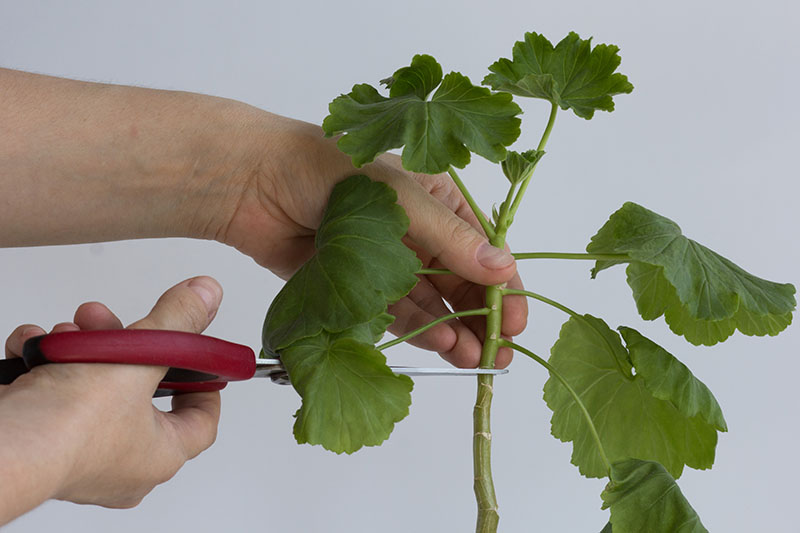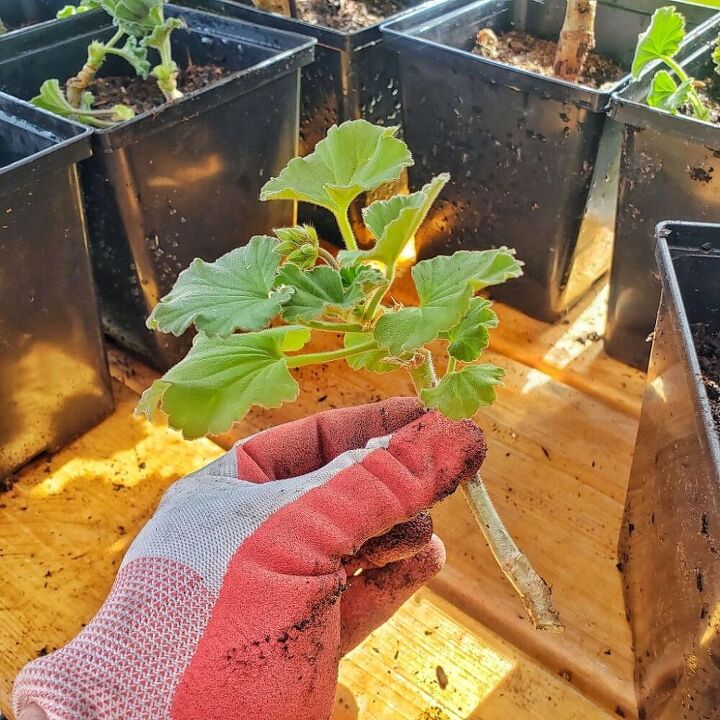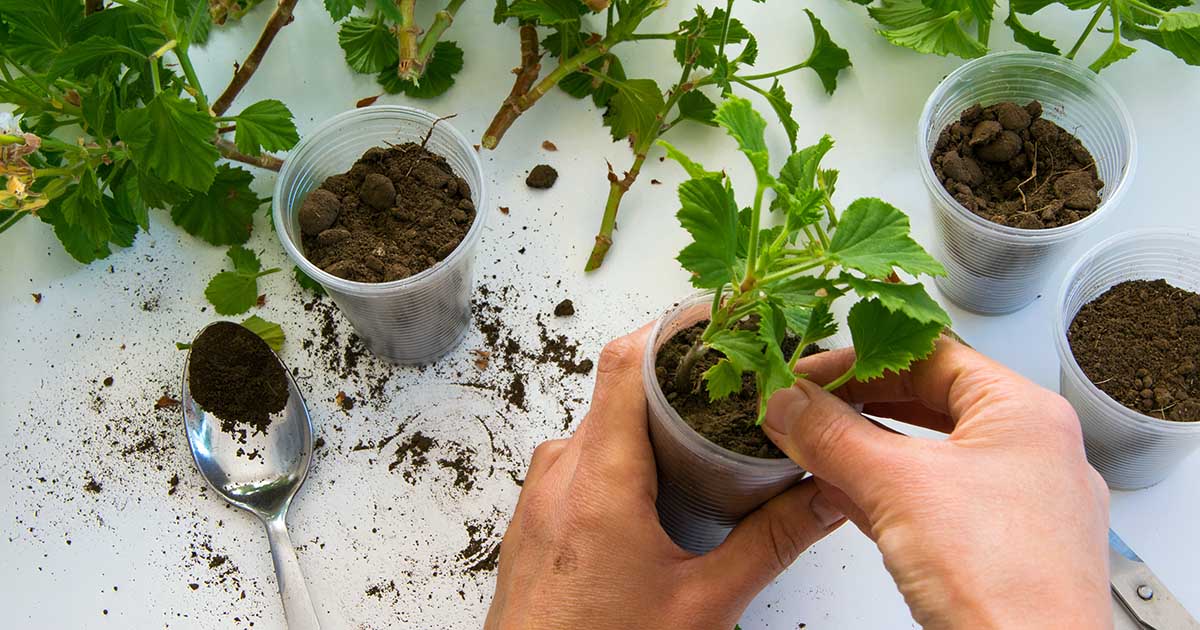The Magic of Stem Cuttings
Geranium propagation through stem cuttings is a popular method among gardeners, and for good reason. This technique offers a convenient and effective way to multiply geranium plants, allowing enthusiasts to share their favorite varieties with friends and family or simply to expand their own collections. One of the primary advantages of stem cuttings is their ability to produce plants that are genetically identical to the parent plant, ensuring that the new geraniums will retain the same desirable traits. Additionally, stem cuttings can be taken at any time of the year, making it a versatile method for propagating geraniums. As gardeners seek to expand their knowledge of geranium care and propagation, understanding the process of stem cuttings is an essential step in unlocking the full potential of these beautiful flowers.
Preparing the Perfect Cuttings
To increase the chances of successful geranium propagation, it’s essential to take healthy cuttings. The best time to take cuttings is during the spring or summer when the plant is actively growing. Cuttings should be around 3-4 inches long, with at least two nodes (the joint where a leaf meets the stem). Remove lower leaves, leaving only two or three sets of leaves at the top of the cutting. This helps prevent the cutting from drying out and reduces the risk of root rot. When removing leaves, make a clean cut just above a node, using a sharp, sterile knife or pruning tool. This will help the cutting absorb water more efficiently and promote healthy root growth. By following these simple steps, gardeners can ensure they have the perfect cuttings to propagate their geraniums.
The Rooting Process: What to Expect
The rooting process of geranium cuttings involves several stages of root development. Immediately after taking the cutting, the plant begins to form a callus, a protective layer that covers the cut end. This callus will eventually develop into roots. Within 1-2 weeks, the cutting will start to produce tiny white roots, which will gradually grow and thicken over time. As the roots develop, the cutting will begin to produce new leaves and stems, a sign that the rooting process is progressing successfully. To create an optimal environment for rooting, it’s essential to provide the cutting with high humidity, warm temperatures, and bright, indirect light. By understanding the rooting process, gardeners can better care for their geranium cuttings and increase their chances of successful propagation. As they wait for their cuttings to root, gardeners often wonder, how long does it take for geranium cuttings to root? The answer to this question will depend on several factors, including the health of the cutting, the rooting medium, and the environmental conditions.
Factors Affecting Rooting Time
Several factors can influence the time it takes for geranium cuttings to root. Temperature plays a significant role, with optimal rooting temperatures ranging from 65°F to 75°F (18°C to 24°C). Higher temperatures can lead to faster rooting, but may also increase the risk of root rot. Humidity is another crucial factor, with high humidity helping to promote healthy root growth. Light also affects rooting time, with bright, indirect light encouraging root development. The rooting medium used can also impact the rooting process, with some mediums, such as peat moss or perlite, providing better aeration and moisture retention than others. Additionally, the health and quality of the cutting itself can affect the rooting time, with fresh, disease-free cuttings typically rooting faster than older or diseased cuttings. Understanding these factors can help gardeners optimize their rooting conditions and answer the question, how long does it take for geranium cuttings to root? By controlling these factors, gardeners can increase their chances of successful geranium propagation.
How Long Does it Take for Geranium Cuttings to Root?
One of the most common questions gardeners ask when propagating geraniums through stem cuttings is, how long does it take for geranium cuttings to root? The answer to this question can vary depending on several factors, including the health of the cutting, the rooting medium, and the environmental conditions. On average, it can take anywhere from 1-6 weeks for geranium cuttings to develop roots. During this time, the cutting will undergo several stages of root development, including callus formation, root initiation, and root elongation. As the roots develop, the cutting will begin to produce new leaves and stems, a sign that the rooting process is progressing successfully.
So, how long does it take for geranium cuttings to root? In general, gardeners can expect to see roots developing within 1-2 weeks, with the cutting being fully rooted within 3-6 weeks. However, this time frame can be influenced by factors such as temperature, humidity, and light. By providing optimal rooting conditions and proper care, gardeners can increase their chances of successful geranium propagation and reduce the time it takes for geranium cuttings to root.
Tips for Encouraging Faster Rooting
While the average time frame for geranium cuttings to root is around 1-6 weeks, there are several tips and tricks that can help promote faster rooting. One of the most effective ways to encourage faster rooting is by using rooting hormones. These hormones, which can be found in powder or liquid form, stimulate root growth and increase the chances of successful propagation. Another key factor in promoting faster rooting is maintaining high humidity. This can be achieved by covering the cuttings with a clear plastic bag or a cloche, which helps to retain moisture and create a warm, humid environment.
In addition to using rooting hormones and maintaining high humidity, providing optimal light conditions can also help to promote faster rooting. Geranium cuttings prefer bright, indirect light, which can help to stimulate root growth and promote healthy development. By providing the right conditions and using the right techniques, gardeners can increase their chances of successful geranium propagation and reduce the time it takes for geranium cuttings to root. With a little patience and attention to detail, gardeners can enjoy an abundance of healthy, thriving geraniums in no time.
Common Mistakes to Avoid
While geranium propagation through stem cuttings can be a highly effective method, there are several common mistakes that can hinder the rooting process. One of the most critical mistakes to avoid is overwatering, which can lead to root rot and prevent the cutting from developing healthy roots. On the other hand, underwatering can also be detrimental, as it can cause the cutting to dry out and reduce its chances of successful propagation.
Another common mistake to avoid is inadequate light. Geranium cuttings require bright, indirect light to promote healthy root growth and development. Insufficient light can lead to weak and spindly growth, making it more challenging to achieve successful propagation. Additionally, failing to remove lower leaves from the cutting can increase the risk of root rot and reduce the chances of successful rooting.
By being aware of these common mistakes and taking steps to avoid them, gardeners can increase their chances of successful geranium propagation and reduce the time it takes for geranium cuttings to root. With a little patience and attention to detail, gardeners can enjoy an abundance of healthy, thriving geraniums in no time.
Conclusion: Mastering the Art of Geranium Propagation
In conclusion, geranium propagation through stem cuttings is a simple yet effective method for gardeners to multiply their favorite geranium varieties. By following the steps outlined in this article, gardeners can increase their chances of successful propagation and reduce the time it takes for geranium cuttings to root. Remember, patience, attention to detail, and proper care are key to achieving successful geranium propagation.
By understanding the factors that influence the rooting process, such as temperature, humidity, light, and rooting medium, gardeners can create an optimal environment for their geranium cuttings to thrive. Additionally, by avoiding common mistakes like overwatering, underwatering, and inadequate light, gardeners can ensure that their cuttings have the best chance of successful rooting.
With the right techniques and a little practice, gardeners can master the art of geranium propagation and enjoy an abundance of healthy, thriving geraniums in their gardens. Whether you’re a seasoned gardener or just starting out, geranium propagation is a valuable skill to have in your toolkit. So why not give it a try and see how long it takes for geranium cuttings to root in your own garden?









